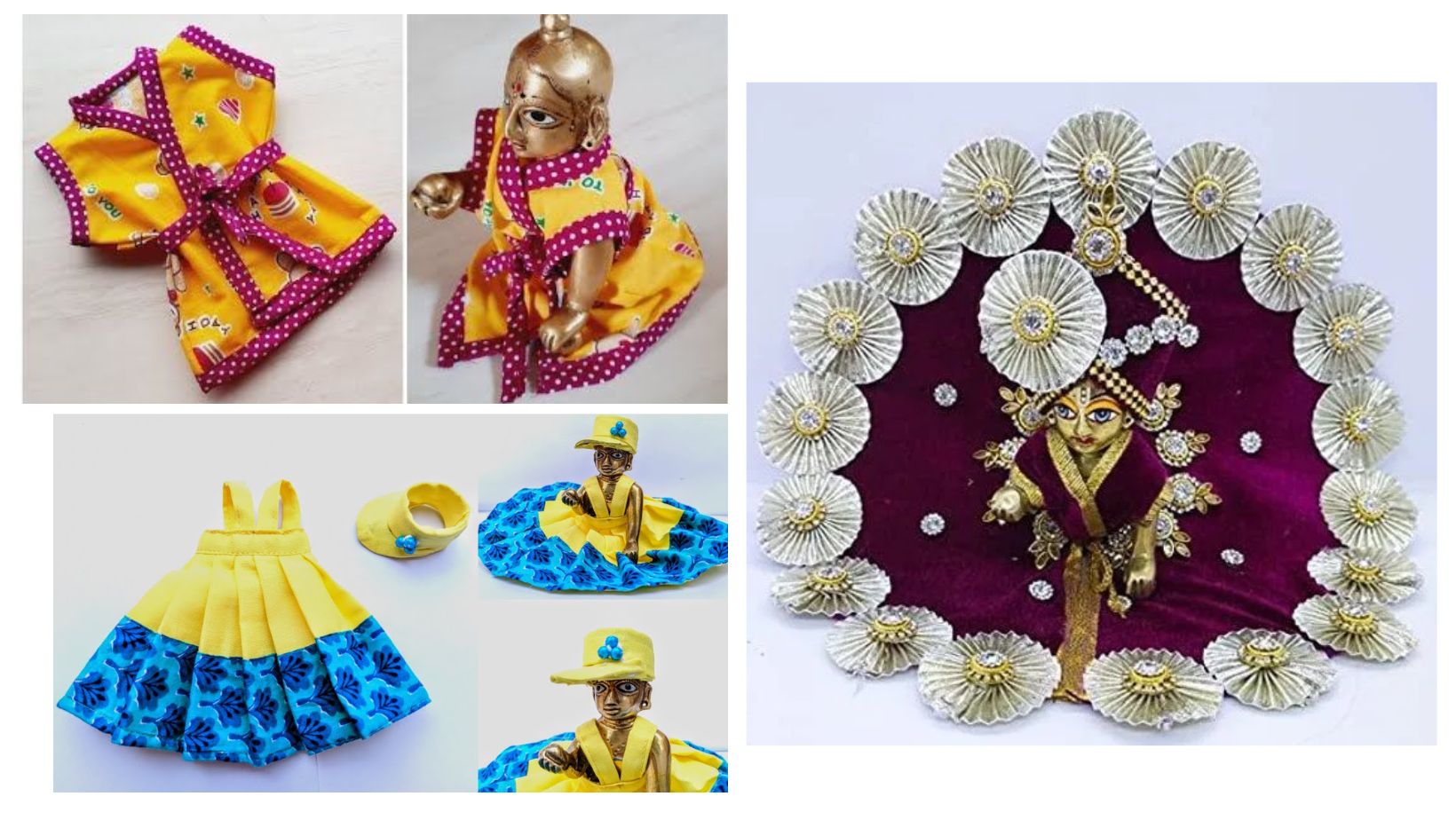Creating intricate and vibrant dresses for Laddu Gopal Ji, also known as Thakur Ji, is not just a tradition but an art form that reflects devotion, creativity, and reverence. The process of crafting these dresses involves meticulous attention to detail, a blend of traditional techniques, and a touch of innovation. Let’s delve into the delightful world of making Thakur Ji dresses, exploring the steps, materials, and significance of this cherished practice.
Understanding the Significance:
Laddu Gopal Ji, the beloved form of Lord Krishna as an infant, holds a special place in the hearts of devotees. Dressing the deity is an act of love and devotion. The dresses signify adornment and care, symbolizing the relationship between the devotee and the divine. Each attire is not merely a piece of cloth; it’s a gesture of respect, celebration, and offering.
Materials Required:
1. Fabric: The choice of fabric plays a crucial role in Thakur Ji dresses. Silk, cotton, or satin are commonly used, with silk being favored for its luxurious appeal.
2. Embellishments: Zari, beads, sequins, stones, and intricate embroidery threads are used to add splendor to the dresses.
3. Accessories: Tiny buttons, laces, miniature jewelry pieces, and ribbons are utilized to enhance the overall look.
4. Sewing Tools: Needles, threads, scissors, measuring tapes, and other sewing essentials are necessary for the crafting process.
Steps to Make Thakur Ji Dresses:
1. Design Selection:
The process typically begins with choosing a design. Devotees often draw inspiration from traditional patterns, mythological stories, or personal preferences. Designs can vary from simple and elegant to ornate and detailed.
2. Fabric Preparation:
Once the design is finalized, selecting the appropriate fabric follows suit. It’s important to ensure that the fabric is of high quality, as it contributes to the overall appearance and durability of the dress. The fabric is then washed and ironed before cutting.
3. Cutting and Stitching:
The fabric is meticulously cut according to the chosen design. Precision is key here, as the dresses are usually tiny in size. Skilled artisans then employ various stitching techniques to assemble the dress, keeping in mind the measurements and intricacies of the design.
4. Embellishment and Decoration:
This step involves adding embellishments like zari work, embroidery, beadwork, and other decorative elements. Each stitch and embellishment is carefully crafted to create a visually stunning attire fit for Thakur Ji.
5. Finishing Touches:
Tiny accessories such as buttons, laces, and jewelry pieces are delicately added to enhance the beauty of the dress. The final touches are given to ensure that every detail aligns with the envisioned design.
Preservation and Care:
Cultural Significance:
The tradition of dressing Thakur Ji is deeply rooted in Hindu culture. It’s not merely about attire; it’s a form of Bhakti (devotion) and Seva (service) towards the deity. This practice transcends generations, passing down craftsmanship and devotion from one to another.
Conclusion:
The art of making Laddu Gopal Ji dresses, or Thakur Ji dresses, is a beautiful amalgamation of tradition, craftsmanship, and devotion. Each dress crafted with love and dedication becomes a symbol of reverence and connection between the devotee and the divine. Through this age-old practice, devotees express their unwavering devotion and commitment to honoring the divine presence of Thakur Ji in their lives.
Also read – Laddu Gopal Ji Winter Dressing Ideas
Also read – Your Complete Travel Guide to Tungnath Mahadev Temple
